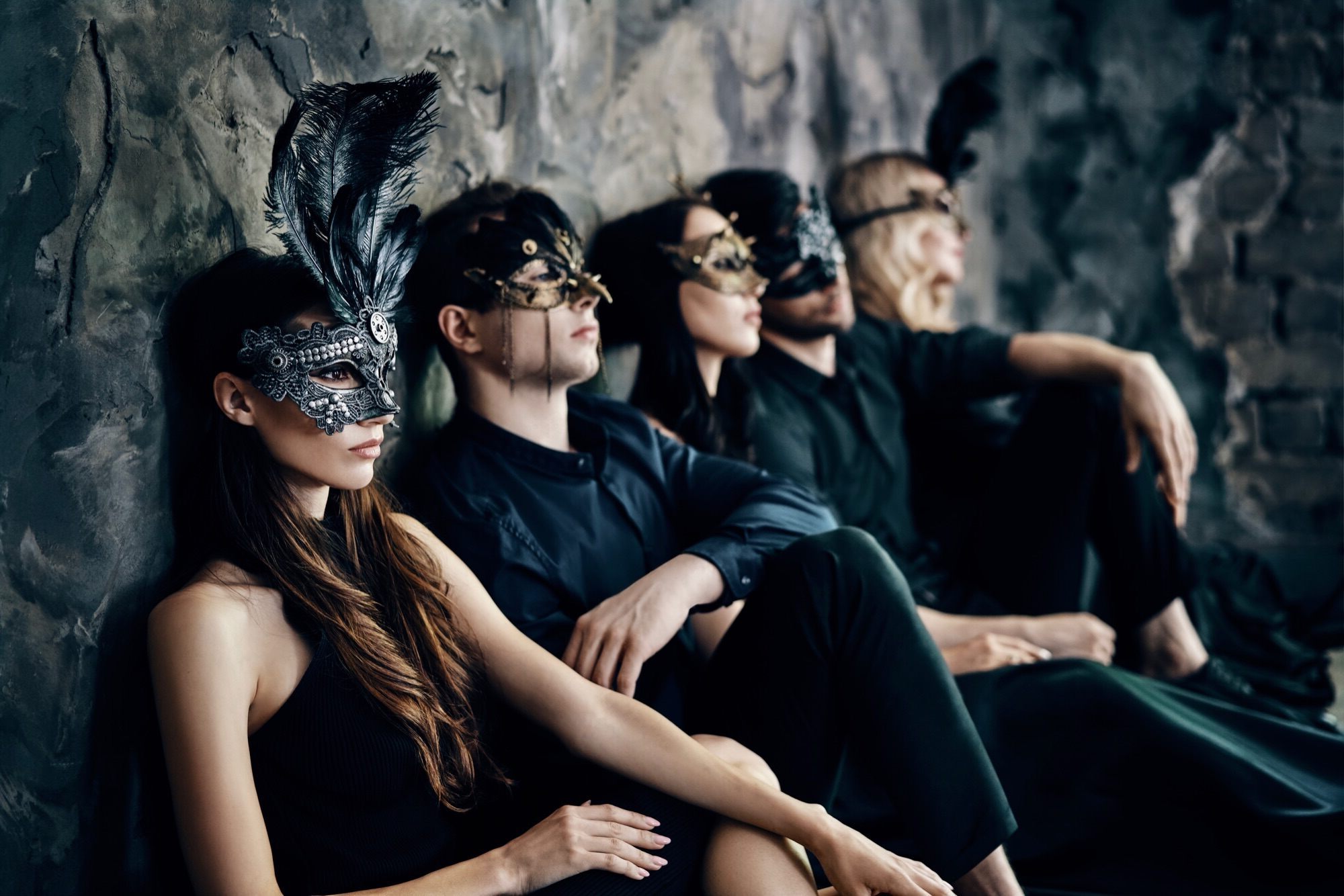
Masquerade balls have enchanted people for centuries with their blend of mystery, elegance, and extravagance. Originating in ancient Roman and Venetian traditions, these events evolved into grand spectacles in medieval Europe, captivating both the elite and common folk. From the scandalous "Bal des Ardents" in 1393 to the lavish Venetian carnival celebrations, masquerade balls have always been more than just parties. They served as platforms for social interaction, cultural exchange, and even social commentary. Today, they continue to fascinate, offering a unique experience where hidden identities and elaborate costumes create an atmosphere of intrigue and excitement.
Key Takeaways:
- Masquerade balls have a fascinating history dating back to ancient Rome and Venice, featuring elaborate masks and costumes that added mystery and intrigue to the events.
- These glamorous gatherings have transcended centuries, influencing literature, film, and even video games, offering a unique experience filled with glamour, music, and the allure of hidden identities.
Ancient Origins and Early History
Masquerade balls have a rich history that spans centuries. Their origins can be traced back to ancient Roman and Venetian traditions, where masks and costumes played a crucial role in creating an atmosphere of mystery and intrigue.
-
Ancient Origins: Masquerade balls have their roots in ancient Roman and Venetian traditions. These early events were characterized by elaborate masks and costumes, which created an atmosphere of mystery and intrigue.
-
Medieval Europe: The first recorded masquerade ball dates back to medieval Europe, specifically during the carnival season. These events were initially popular among the less affluent classes, who would wear masks and colorful costumes to participate in the festivities.
-
Royal Masquerades: One of the earliest recorded royal masquerade balls was the "Bal des Ardents," held by French King Charles VI in 1393. This event, also known as the "Burning Men’s Ball," was a lavish celebration that included masked dancers dressed as wild men and demons. The scandalous nature of this ball catapulted masquerade parties to the forefront of public imagination, symbolizing decadence and intrigue.
Venetian Influence and Cultural Significance
Venetian carnival celebrations significantly influenced the development of masquerade balls. These events were not just social gatherings but also cultural phenomena that allowed for the intermingling of different social classes.
-
Venetian Influence: The Venetian carnival celebrations significantly influenced the development of masquerade balls. In the 16th century, Venetian elites and aristocrats would attend these balls, which were often rife with scandals, excessive drinking, and clandestine activities. The elaborate masks and costumes associated with Venetian carnival celebrations have become iconic symbols of masquerade events.
-
Symbolism and Tradition: Masks played a crucial role in masquerade balls, serving as a means to conceal identities and allow individuals to mingle incognito. This element of mystery added to the allure and excitement of such events, making them a unique blend of social interaction and theatrical performance.
-
Cultural Significance: Masquerade balls were not just social events but also cultural phenomena. They provided a platform for the intermingling of classes, allowing patrons to interact without being judged by their social status. This aspect of masquerade balls was particularly significant in medieval Europe, where social hierarchies were rigidly defined.
Decadence, Immorality, and Historical Context
Masquerade balls were often associated with high levels of decadence and immorality. Despite this, they continued to thrive, especially in Catholic-dominated regions.
-
Decadence and Immorality: The masquerade ball phenomenon was often associated with high levels of decadence and immorality. This led to an anti-masquerade movement in some Protestant-dominated countries, where the events were seen as sinful and a threat to working-class morals. Despite this, masquerade balls continued to thrive in Catholic-dominated regions.
-
Historical Context: Masquerade balls were a staple of carnival celebrations in medieval Europe. They involved elaborate allegorical Royal Entries, pageants, and triumphal processions celebrating marriages and other dynastic events. These events were a way for the nobility to showcase their wealth and power through extravagant costumes and masks.
-
Spread to Britain: The tradition of masquerade balls was introduced to Britain by Count John James Heidegger, who had been influenced by his time in Venice. Heidegger organized the first masquerade ball in London, which took place at the Haymarket Opera House. This event quickly gained popularity among the nobility and landed gentry, spreading to dance halls and other public venues.
Masquerade Balls in Literature and Popular Culture
Masquerade balls have captivated the imagination of many writers and filmmakers. They have been featured in various works of literature and film, highlighting their enduring appeal.
-
Literary and Film References: Masquerade balls have captivated the imagination of many writers and filmmakers. They have been featured in various works of literature, such as Edgar Allan Poe’s "The Masque of the Red Death," and in movies like "Eyes Wide Shut" and "Labyrinth." These references highlight the enduring appeal of masquerade balls as a symbol of mystery and intrigue.
-
Jane Austen’s Attendance: In 1817, Jane Austen attended a masquerade ball with her family, marking the widespread popularity of these events among the upper class in early 19th-century England. This event underscores the social significance of masquerade balls during this period.
-
African American Exclusion: In the 18th century, African Americans were excluded from attending Mardi Gras in New Orleans. This exclusion highlights the class-based nature of masquerade balls, which were often reserved for the elite.
Modern-Day Masquerade Balls and Attire
Today, masquerade balls continue to captivate audiences worldwide. From traditional Venetian-style balls to modern themed events, these gatherings offer a unique experience filled with glamour, music, and the allure of hidden identities.
-
Modern-Day Masquerade Balls: Today, masquerade balls continue to captivate audiences worldwide. From traditional Venetian-style balls to modern themed events, these gatherings offer a unique experience filled with glamour, music, and the allure of hidden identities.
-
Elaborate Attire: One of the fascinating aspects of masquerade balls is the elaborate and glamorous attire worn by attendees. From stunning gowns to intricately designed masks, the fashion at these events is a visual feast for the eyes. The attire often reflects the theme of the ball, adding to its overall mystique and charm.
-
Venetian Carnival Celebrations: Venetian carnival celebrations are renowned for their elaborate masquerade balls. These events involve elaborate masks and costumes, often depicting fantastical creatures and mythological figures. The Venetian carnival is a time when social norms are temporarily suspended, allowing participants to indulge in a world of fantasy and excess.
Historical Portraits and Anti-Masquerade Movement
Masquerade balls have influenced art significantly, and they have also faced opposition due to their association with decadence and immorality.
-
Royal Entries: Masquerade balls were often used to celebrate Royal Entries, grand occasions where kings and queens were welcomed into their cities. These events involved elaborate pageants and processions, showcasing the wealth and power of the ruling monarchs.
-
Anti-Masquerade Movement: An anti-masquerade movement emerged in response to the perceived immorality and decadence associated with masquerade balls. This movement was particularly strong in Protestant-dominated countries, where the events were seen as a threat to moral values.
-
Cultural References: Masquerade balls have been featured in various cultural references, including literature and film. For example, Edgar Allan Poe’s short story "The Masque of the Red Death" is set at a masquerade ball where a central figure turns out to be his costume. Similarly, the video game "Dishonored" features a mission called Lady Boyle's Last Party, which takes place at a masquerade ball where the primary objective is to discern the identity of Lady Boyle, a masked party-goer.
-
Historical Portraits: Historical portraits often depicted subjects dressed in masquerade attire. For example, Gainsborough's "Blue Boy" is a famous portrait that showcases the later 18th-century popularity of portraits in fancy dress. This highlights the enduring influence of masquerade balls on art and culture.
Masquerade Balls in Colonial America and the 20th Century
While masquerade dances became popular in Colonial America, there is limited evidence to suggest that actual masquerade balls were held in North America. However, the 20th century saw some of the most notable masquerade balls.
-
Colonial America: While masquerade dances became popular in Colonial America, there is limited evidence to suggest that actual masquerade balls were held in North America. However, portraits featuring subjects dressed as if they were attendees of such events are common, indicating the cultural significance of masquerade balls in the region.
-
20th-Century Masquerade Balls: One of the most notable masquerade balls of the 20th century was held at Palazzo Labia in Venice on September 3, 1951. Hosted by Carlos de Beistegui, this event was dubbed "the party of the century." Another famous ball was The Black and White Ball, held on November 28, 1966, at the Plaza Hotel in New York City. This ball was hosted by author Truman Capote in honor of the Washington Post publisher Katharine Graham.
Masquerade Balls in Modern Culture and Games
Masquerade balls continue to influence modern culture, appearing in literature, film, and even video games.
-
Masquerade Balls in Popular Culture: Masquerade balls have captivated the public imagination for centuries. They have been featured in various works of literature and film, including restoration comedies like Aphra Behn’s The Rover. The masquerade phenomenon has spread across cultures, influencing art, entertainment, and our collective imagination.
-
Psychological and Sociological Insights: Psychologists, historians, and sociologists have extensively studied the cultural fascination with masquerade balls. The phenomenon is complex, involving themes of identity, social interaction, and the blurring of boundaries between reality and fantasy. Despite the complexity, it is clear that masquerade balls continue to captivate audiences worldwide.
-
Masquerade Balls as a Game: Masquerade balls often involved a game-like element where guests were supposed to be unidentifiable. This added a humorous effect to many masquerades, making them more enjoyable than typical balls. The challenge of identifying one another's identities created a sense of camaraderie and excitement among participants.
-
Masquerade Balls in Literature: Masquerade balls have been a staple in literature, often serving as a backdrop for dramatic scenes. For example, Mikhail Lermontov’s play Masquerade features a central plot revolving around a masquerade ball. Similarly, William Shakespeare’s Romeo and Juliet includes a pivotal scene at a masquerade ball where Romeo meets Juliet.
-
Masquerade Balls in Film: Masquerade balls have also been featured prominently in film. The Phantom of the Opera, for instance, includes a scene at a masked ball where the Phantom's (Erik's) costume is that of the Red Death from Edgar Allan Poe’s story The Masque of the Red Death. These references highlight the enduring appeal of masquerade balls as a symbol of mystery and intrigue.
-
Masquerade Balls in Video Games: Video games have also incorporated masquerade balls into their narratives. The video game Dishonored features a mission called Lady Boyle's Last Party, set at a masquerade ball where the primary objective is to discern the identity of Lady Boyle, a masked party-goer. Similarly, Assassin's Creed II includes a series of missions set during Venetian Carnival, culminating in a mission that takes place at a prestigious masquerade ball.
Modern Interpretations and Social Commentary
Today, masquerade balls continue to be a fascinating aspect of human culture and entertainment. They offer a unique experience filled with glamour, music, and the allure of hidden identities.
-
Masquerade Balls in Modern Times: Today, masquerade balls continue to captivate audiences worldwide. From charity balls in the UK to sweet 16 parties in America, these events offer a unique experience filled with glamour, music, and the allure of hidden identities. The modern-day interpretation of masquerade balls often incorporates themes from various cultures and historical periods, making them a diverse and inclusive form of entertainment.
-
Masquerade Balls as a Form of Social Commentary: Masquerade balls have often been used as a form of social commentary. For instance, Mikhail Lermontov’s play Masquerade was censored due to its implied criticism of the aristocratic Engelhardt family's masquerade balls. This highlights the use of masquerade balls as a tool for critiquing societal norms and power structures.
-
Masquerade Balls and Identity: The use of masks in masquerade balls allows participants to explore different identities and personas. This aspect of masquerade balls has been explored in various works of literature and film, where characters often use their masks to conceal or reveal aspects of their true selves. The blurring of boundaries between reality and fantasy is a central theme in many masquerade ball narratives.
-
Masquerade Balls and Decadence: Masquerade balls have historically been associated with decadence and excess. The lavish nature of these events, including excessive drinking and inappropriate interactions, has led to criticism and censorship. However, this aspect of masquerade balls also adds to their allure, making them a symbol of indulgence and liberation.
-
Masquerade Balls in Art: Masquerade balls have influenced art significantly. Historical portraits often depicted subjects dressed in masquerade attire, showcasing the cultural significance of these events. The use of masks and elaborate costumes in art reflects the enduring influence of masquerade balls on visual culture.
-
Masquerade Balls and Social Hierarchy: Masquerade balls often challenged social hierarchies by allowing participants to interact without being judged by their social status. This aspect of masquerade balls was particularly significant in medieval Europe, where rigid social hierarchies were prevalent. The use of masks allowed patrons to break free from these constraints, creating a more egalitarian atmosphere.
-
Masquerade Balls and Cultural Exchange: Masquerade balls have facilitated cultural exchange across different regions and historical periods. The spread of masquerade balls from medieval Europe to colonial America and beyond reflects the global influence of these events. This cultural exchange has enriched the diversity of masquerade balls, incorporating various themes and traditions into their narratives.
-
Conclusion: In conclusion, masquerade balls have a rich and complex history that spans centuries. From their origins in medieval Europe to their modern-day interpretations, these events have captivated audiences with their mystery, elegance, and sheer extravagance. Whether it is the elaborate attire, the symbolism of masks, or the cultural significance of these events, masquerade balls continue to be a fascinating aspect of human culture and entertainment.
The Enduring Allure of Masquerade Balls
Masquerade balls have fascinated people for centuries. From their ancient origins in Roman and Venetian traditions to their medieval European roots, these events have always been about mystery and elegance. They allowed folks to mingle without the constraints of social status, making them unique social phenomena. Despite facing criticism for their decadence and immorality, masquerade balls thrived, especially in Catholic-dominated regions.
Today, they continue to captivate audiences worldwide. Whether it's a traditional Venetian-style ball or a modern themed event, the allure of hidden identities and elaborate costumes remains strong. These gatherings offer a glimpse into a world where reality and fantasy blur, creating unforgettable experiences. The rich history and cultural significance of masquerade balls ensure they will always hold a special place in our collective imagination.
Frequently Asked Questions
Was this page helpful?
Our commitment to delivering trustworthy and engaging content is at the heart of what we do. Each fact on our site is contributed by real users like you, bringing a wealth of diverse insights and information. To ensure the highest standards of accuracy and reliability, our dedicated editors meticulously review each submission. This process guarantees that the facts we share are not only fascinating but also credible. Trust in our commitment to quality and authenticity as you explore and learn with us.


